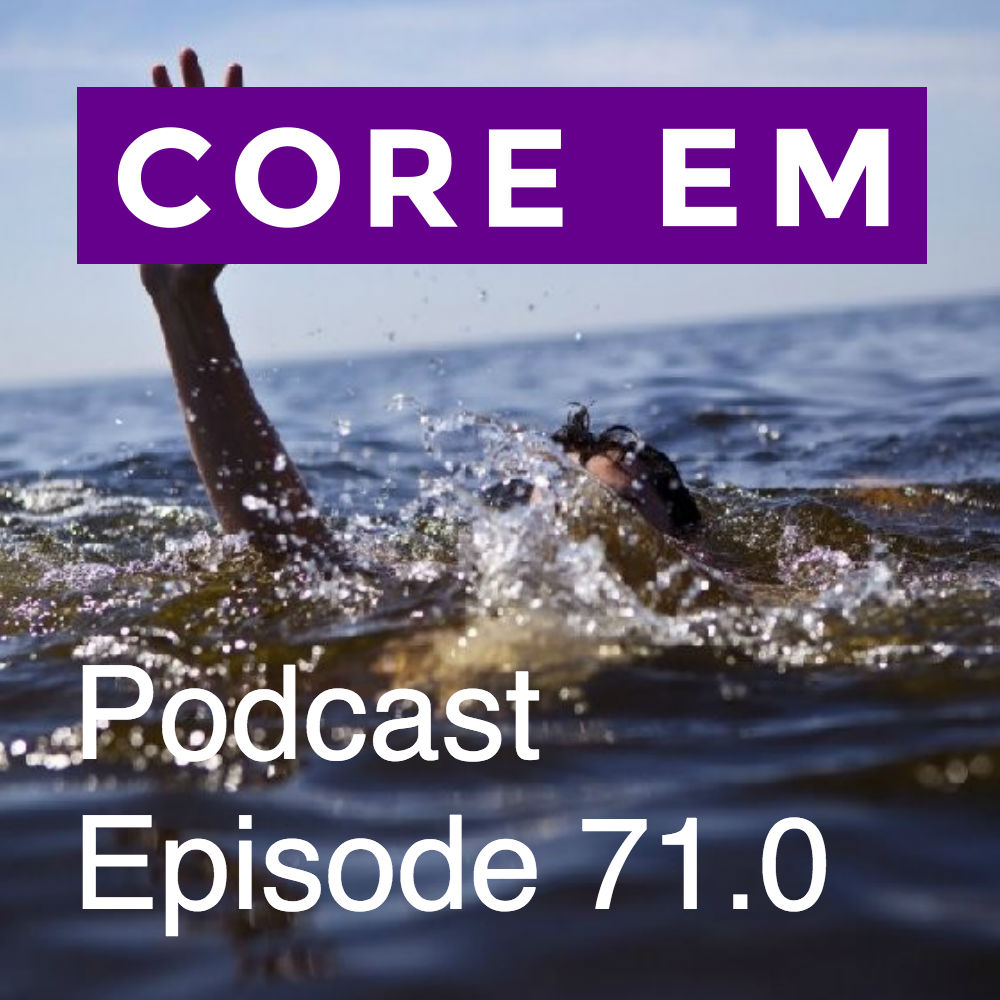This week we feature a lecture from Anand Swaminathan at our weekly conference on the ED management of acute pulmonary edema
Episode 71.0 – Acute Pulmonary Edema
Show Notes

Read More
Core EM: Acute Pulmonary Edema
EMCrit: Podcast 1 – Sympathetic Crashing Acute Pulmonary Edema
REBEL EM: Morphine Kills in Acute Decompensated Heart Failure
emDocs: Furosemide in the Treatment of Acute Pulmonary Edema



Great post Swami!
Just a few comments and a question.
NPPV.
Agree it avoided tons of tubes (NNT = 8 according to thennt.com).
We use CPAP (PEEP 10, FiO2 >50%) more than NPPV with high-flow generator that is easier to learn and apply (in Italy we don’t have any RN to help us…).
Morphine
No way, with the advent of super fast NPPV effect no place for morphine
First 10 minutes
Totally agree! I believe NPPV changed the destiny of ACPE patients just in the first 10 minutes. Incidentally, it changed also our first 10 minutes; the patient doesn’t sweat any more, nor the doctor (Amal Mattu’s law #2) …
Question
What about ACPE patients without hypertensive crisis BP < 140/90). Mortality is higher. Different approach?
Thanks for the comments and thoughts.
The lower BP group start to edge into cardiogenic shock. You can use nitro to unload them but I start at much lower doses and carefully titrate. These patients may end up needing vasopressor support. Looking for the underlying cause (MI, blown valve) is critical here.
Thank you guys for all the amazing effort to spread EM across the FOAMed community.
a special thanks to Dr. Swami. please keep up the great work that you all are doing.
Thanks! We’ve got a great crew here cranking out amazing stuff.
Thanks for this great podcast! I’m an RN in the ICU who had a patient go into pulmonary edema a few days ago and this was a huge help in seeing what went right and what went wrong.
How to differentiate between Acute Pulmonary Oedema v/s Heart Failure ?
Wan – simple CHF exacerbation will typically have slightly elevated BP, minor tachypnea, peripheral edema. The patient is relatively stable and isn’t acutely ill appearing.
APE is much more dramatic. Pts are markedly hypertensive, tachycardic, tachypneic and hypoxic. This is a sympathetic overdrive state so they look like they just snorted a bunch of cocaine.
Amazing post! We’re linking to this terrific article on our website.
Keep up the great writing.
King regards,
Dinesen Henneberg
How about the treatment of non-cardiogenic pulmonary oedema?